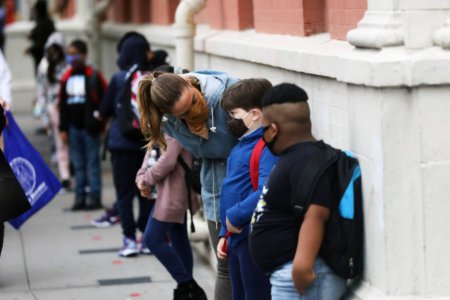
The recent US election 2020 has seen the Biden-Harris administration geared up to take over the White House in January 2021. As the US begins reforms in all sectors, the international education sector will no doubt be centered in their efforts to ensure the US reclaims its foot hold in the educational sector to secure its position as a leading international education destination.
Over the past few years, we have witnessed globally the shrinking of international students in all traditionally popular education destinations like the US, Canada, Australia and the UK, among others. The US has seen a decline of international students for the past three years with much of it contributed by the present Trump administration, as stated by the National Association of Foreign Student Advisers (NAFSA) executive director and CEO, Esther D. Brimmer, “Travel bans, executive orders, detrimental regulatory actions and xenophobic rhetoric from the highest levels of US government have all contributed to fewer students opting for the US as a study destination”. This begs the question: will the Biden-Harris administration reverse the perceptions of the US internationally?
As a reprieve, despite a slight decline of 1.8% from the previous year, the latest 2019-2020 Open Doors report by the Institute International Education (IIE) and the US Department of State’s Bureau of Education and Cultural Affairs revealed that the US has attracted 1.15 million international students. This equates to 20% of the world’s higher education international market in the education sector making it the top destination for international students. The data indicates the highest international students in the US is led by China and India followed by South Korea and include Asian countries such as Bangladesh, Japan, Taiwan, Vietnam, Thailand, and Malaysia, with Asian students comprising approximately 66% of the total international student population in the US. With so much at stake, what can be expected from the Biden-Harris administration came January 2021?
How significant is the international education sector to the US?

Prema Ponnudurai is the Head of Department, Department of Liberal Arts & Humanities at the School of Liberal Arts & Sciences at Taylor’s University. Source: Supplied
To understand this issue, it is vital that we look to the past before we can make sense of the future. The expansion of education by the US began in the mid-20th century after World War II in an effort of rebuilding relations, provide a sense of liberation and aiding in restructuring of educational systems in countries impacted by the war. As a result of this, 3 Acts were established; The Fulbright- Hays by J. William Fulbright or Mutual Education and Cultural Exchange Act, Foreign Assistance Act and the Peace Corps Act which all intended to increase mutual exchange and enhance growth in the US educational sector. Various exchange programmes through these initiatives have resulted in the opportunity for hundreds of Malaysians annually benefitting from these exchanges in their specific discipline areas and contributing politically, economically, and socially.
Today, education is 4th highest export of the US and 2018/2019 reports have revealed that international students contributed $ 41 billion to the US economy. Additionally, there was an increase of 9.6% or equaling 223,085 Optional Practical Training (OPT) workers in 2018 consisting of graduate students in the STEM and Arts disciplines as well as supported 458,290 jobs in the US. Over the decades, Malaysia has paved the way for mutual economic growth making the US Malaysia’s third top bilateral trade partner contributing towards 217.28 billion into the Malaysia economy in 2018. It cannot be denied that over the past two years, Malaysia has undergone unprecedented changes in government. It is therefore essential that Malaysia too resolves its political and economic matters to maintain these ties with the US and remain a lucrative and stable economic partner in the region.
Besides economic benefits brought by international students in the US, there lies benefits for US universities too in having a substantial international student population on campus. International student ratios and international outlook of universities carry high percentages and are important indicators for global rankings. Rankings are of great importance to US universities where in THE 2021 World University Rankings, eight out of the top 10 universities and the QS World Rankings five out of the top 10 positions are firmly held by US universities. From students perspectives, studies have indicated that a large determinant in choosing a overseas university, lies in its global ranking.
What is Biden’s manifesto on higher education?
Joe Biden’s campaign manifesto has outlined a comprehensive educational reform in the US and stressed calls to ‘Support Teachers, Respect, and Invest’. He touched on the reforms from all angles; teacher support, pay reviews, students at all levels and training programmes to be reviewed and enhanced for employability, inclusivity and recognising the role of education towards the nation’s workforce.
However, most of the focus in his manifesto lies in the per-school, high-school, community college and practical training. He has strong intention to make public colleges and universities tuition-free for all students from lower incomes and debt-relief for students within certain criteria. In addition, in terms of development, there is a proposed allocation of $10 billion towards universities to develop centers of excellence, embark in research, and innovation dedicated to focus on programmes that increase enrollment, retention, and employment rates. Additionally, on his campaign trail he has mentioned that foreign graduates of a US doctoral programmes should be given a green card with their degree in an effort to retain talent and increase economic competitiveness.
These bold steps will no doubt provided positive impact towards the international student population to reap these benefits. Nevertheless, we can expect the first goal of the new administration to be centered on implementing plans and recovery from the COVID-19 pandemic and enabling students to return to campuses.
What can we expect in 2021?
Currently, the US has accounted for over 14 million COVID-19 cases therefore, it is no doubt that the order of the day would be to set in place strategies and policies to reduce the threat of this pandemic further and regain control of the situation. Besides the steps taken by the government of the day, we can expect to see fundamental shifts from the ground up being taken on by US universities themselves to attract the international market and sustain their survival. The initiatives that we can expect are:
- Issuance of visas can be to be less restrictive as the US re-engages with the global community. Previous visa restrictions for students from certain countries will be re-evaluated, increase of acceptance for student F1 visa applications and extensions for student visas.
- With the contraction of international travel and certain international borders still closed well into 2021, this will lead to greater competition among US universities for international market share. US universities will enhance their ‘pull factors’ by way of admission processes, waiver of certain fees, scholarships, heightening of support systems, digitalizing of teaching and learning platforms to attract international students and adapt to a new era of ‘borderless learning’
- With the overshadowing of COVID-19 well into 2021, we can expect an increase in transfer pathways as opposed to direct entry into US universities. By choosing 2+2 programmes, it will allow international students to complete half their degree in the safety of their home country and transfer the final 2 year to the US. This will allow for the COVID-19 pandemic to ease and students to not lose out on the international exposure, cultural awareness, and employability opportunities in the US via OPT after graduating.
Joe Biden and Kamala Harris have recently graced the cover of Time Magazine’s 2020 Person of the Year and as mentioned by Time’s they epitomise “generational change, a fresh perspective, and are an embodiment of America’s diversity”. It is no doubt that 2021 will be a time to rebuild and reform policies and practices globally, nevertheless based on the past trends, the US is poised towards a slightly higher trajectory of being a favourable destination for international higher education globally and will continue to be a favourable higher education destination for Malaysians seeking the American exposure and employment opportunities.
By Prema Ponnudurai, Head of Department, Department of Liberal Arts & Humanities, School of Liberal Arts & Sciences, American Degree Transfer Program, Taylor’s University











